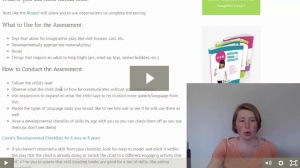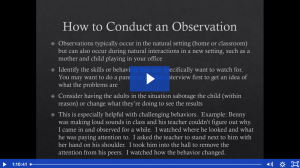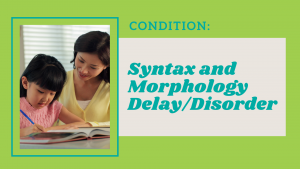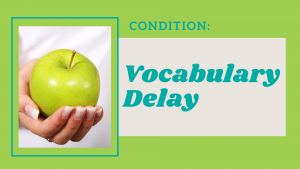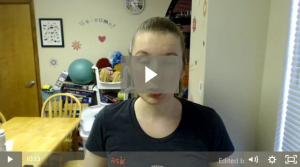Condition: Shortened/Limited Utterance Length (MLU)
Definition:
Mean Length of Utterance (MLU) indicates the average length of a child’s utterances during a specified time, such as during a language sample. MLU can be a great indicator for how well a child is developing expressive language. We typically see that children increase their MLU at a standard rate throughout childhood. A child with a much lower MLU than “average” may be having difficulty with expressive language development.
We often measure MLU in morphemes. A morpheme is the smallest unit of a word that contains meaning and cannot be further divided (without losing the meaning of the original word). Here are some examples of how morphemes are counted:
- ball = 1 morpheme, you cannot divide that word up and still have it mean the round, inflated toy
- balls = 2 morphemes, this can be broken into “ball” and the plural “s” which indicates that there are more than one of them
- butterfly = 1 morpheme, you could divide the word into “butter” and “fly” but then it would no longer mean the beautiful insect with colorful wings that comes from a caterpillar
- Rewatching = 3 morphemes: “re” (meaning again), “watch” (meaning view with one’s eyes), and “ing” (meaning the action is currently occuring)
Developmental Norms:
“Brown’s Stages” were identified by Roger Brown 1925-1997, and described in his classic book (Brown,1973). The stages provide a framework within which to understand and predict the path that normal expressive language development in English usually takes, in terms of morphology and syntax. Here is a quick overview of mean MLU in children during each of Brown’s outlined stages:
- Stage 1: 12-26 mos 1.0-2.0 morphemes per utterance
- Stage 2: 27-30 mos 2.0-2.5 morphemes per utterance
- Stage 3: 31-34 mos 2.5-3.0 morphemes per utterance
- Stage 4: 35-40 mos 3.0-3.75 morphemes per utterance
- Stage 5: 41-46+ mos 3.75-4.5 morphemes per utterance
Evaluation:
The best way to evaluate a child’s mean length of utterance is to collect a language sample and count up each utterance. Make sure you record the session so you don’t have to count the morphemes in the moment. Do something fun and engaging with the child. Ask a lot of open-ended questions and help the child feel comfortable to open up. Alternatively, if the child won’t communicate with you during the session, you can ask parents or caregivers to record a language sample at home so you can analyze that. Sometimes it helps to collect samples from multiple settings so you can average them.
After you collect the language sample, go back and write down every utterance the child says. For each utterance, count the number of morphemes. At the end, divide the total number of morphemes by the number of utterances and you’ll have your mean length of utterance in morphemes.
Check out our other evaluation resources here:
How to Collect a Language Sample
A language sample can be a great part of a full evaluation. Learn how I collect a language sample here.
Have a child who can’t sit down for standardized assessments? Find out here how to conduct a play-based assessment instead.
Suggested Goals and Materials:
When working with children with shortened utterance length, you can use a variety of strategies to increase MLU. You can focus on teaching more grammatical markers, adding vocabulary, or modeling expansions on their current utterances.
Here are some goals that may be helpful for children who are struggling to utterance length. You can click on one of the goals below to learn more. Or, scroll down to the therapy section for more in-depth resources and support for treating this condition.
Click on any goals that are linked up to see any materials and no-prep kits for that skill.
- Expressively Use Spatial Concepts in Conversational Speech (Open the No-Prep Kit)
- Expressively Use Adjectives (Open the No-Prep Kit for Appearance Adjectives)
(Open the No-Prep Kit for Sound Adjectives)
(Open the No-Prep Kit for Smell Adjectives)
(Open the No-Prep Kit for Touch Adjectives)
(Open the No-Prep Kit for Taste Adjectives) - Build Expressive Vocabulary of First 50 Words (Open the No-Prep Kit)
- Expand Vocabulary of Words in Basic Categories (Open the No-Prep Kit)
- Goal: Use Affixes to Decode Unknown Words (Open the No-Prep Kit)
- Use Articles “a” and “the” in Conversational Speech (Open the Articles No-Prep Kit)
- Use Auxiliary Verbs in Conversational Speech (Open the No-Prep Kit for Auxiliary Verb: “Do”)
- Use Plural Nouns in Conversational Speech (Open the Regular Plural Nouns No-Prep Kit)
(Open the Irregular Plural Nouns No-Prep Kit) - Use Past Tense Verbs in Conversational Speech
- Use Possessive ‘s in Response to Questions (Open the Possessive ‘s No Prep Kit)
- Use Pronouns “he” and “she” in Conversational Speech (Open the “he/she” Pronouns No-Prep Kit)
- Use Possessive Pronouns “his” and “her” in Conversational Speech (Open the “his/her” No-Prep Kit)
- Use Subject + Verb + Object Sentences in Conversational Speech (Open the SVO No-Prep Kit)
- Use “to” in Conversational Speech
Therapy:
Here are some more resources and information that may help you when it comes to treating this condition.


